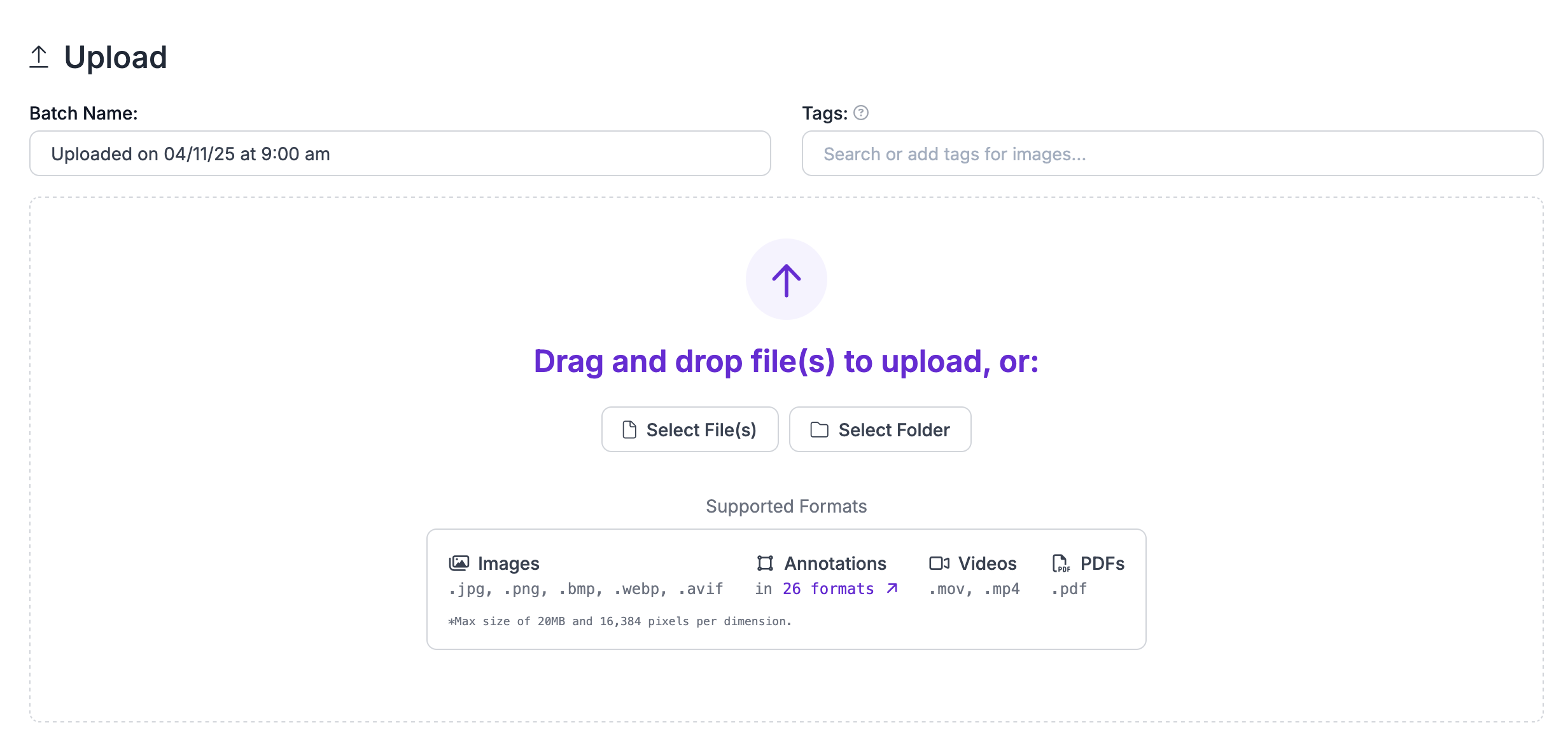In this guide, we show you how to convert data between the
Udacityand
YOLOV8-OBBformats for free. You can use your converted data to train
models and other models that support the
YOLOV8-OBB format.
Roboflow is a universal conversion tool for computer vision annotation formats. The Public plan is the best way for those exploring personal projects, class assignments, and other experiments to try Roboflow. To convert your dataset, start by creating a free workspace on the Public plan.
Once your account has been created, click Create New Project.

Upload your data to Roboflow by dragging and dropping your Udacity TXT images and annotations into the upload space.

Next, click "Generate New Version" to generate a new version of your dataset:

You can then apply any preprocessing or augmentation steps to your dataset:

After generating, you will be prompted to Export your dataset. You can choose to receive your dataset as a .zip file or a curl download link. Choose YOLOv8 Oriented Bounding Boxes when asked in what format you want to export your data. You will see a dropdown with various options like this:

Congratulations, you have successfully converted your dataset from Udacity TXT format to YOLOv8 Oriented Bounding Boxes format!
Ready to use your new YOLOV8-OBB dataset? Great!
Try an end-to-end computer vision tutorial, check out your dataset health check or experiment with some augmentations.
Yes! It is free to convert Udacity TXT data into the YOLOv8 Oriented Bounding Boxes format on the Roboflow platform.
If you have between a few and a few thousand images, converting data between these formats will be quick. But, the time it takes to convert between data formats increases with the more images you have.


